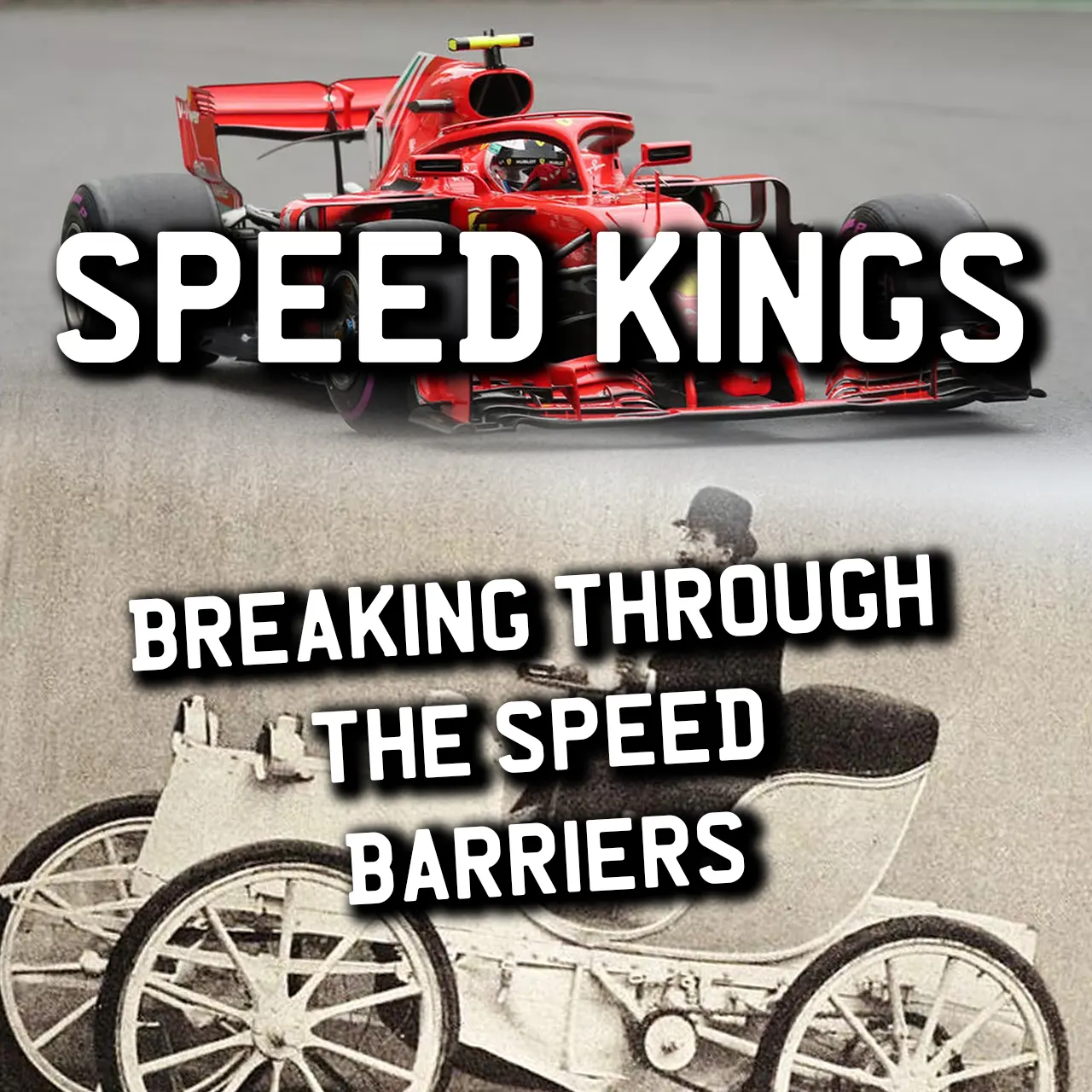The Aston Martin DB5 – A James Bond Legacy
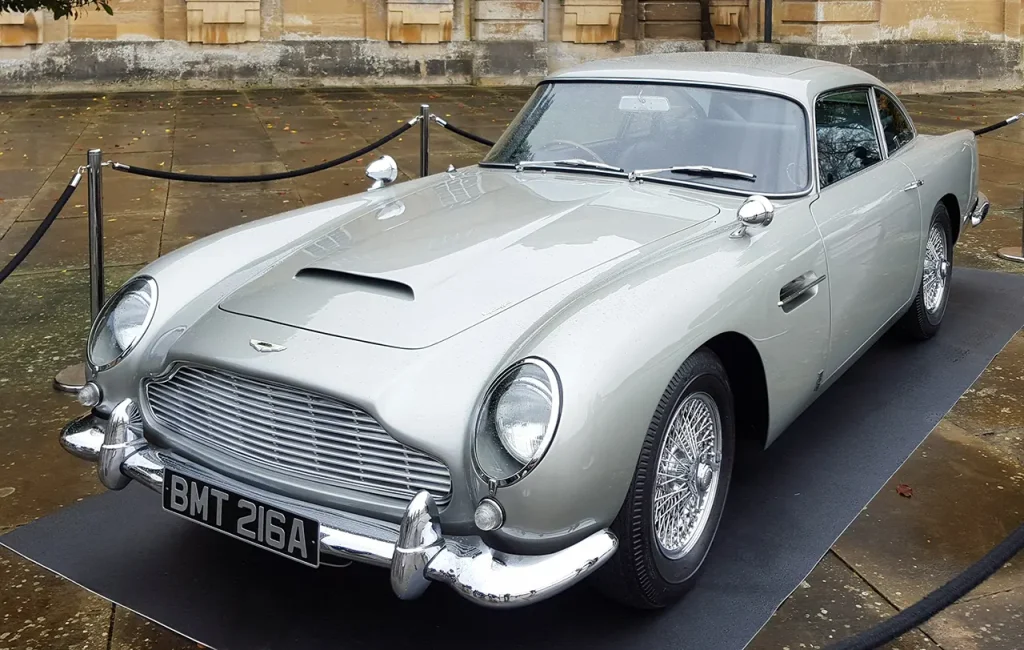
The most famous car in the world – the Aston Martin DB5 – secured its iconic status by making an appearance in 7 James Bond movies. The DB5 is a sleek, silver grand tourer that stood as the epitome of sophistication and style, matching 007’s personality flawlessly. The car’s charisma, coupled with Bond’s thrilling adventures, cements its place in cinematic history and the hearts of car enthusiast worldwide.
The vehicle’s aesthetics and gadgetry, from machine guns to tire slashers and, of course, the revolving number plates, captivated audiences. These number plates frequently changed to match Bond’s locations and became a distinct feature of his secret agent persona. The revolving plates added a layer of intrigue to the DB5, enhancing the cinematic allure while giving bond a novel way to escape the bad guys.
The influence of the Aston Martin DB5 has transcended the silver screen and shaped popular culture’s perception of what a sophisticated luxury car was all about. The DB5s appearance in subsequent Bond movies reinforced the connection between Bond himself and his trusty spy-car. Furthermore, the enduring legacy (defined in part by its unique revolving number plates) affirms the Aston Martin DB5 as a genuine movie star in its own right.
DeLorean DMC-12: Back to the Future’s Time Traveling Icon
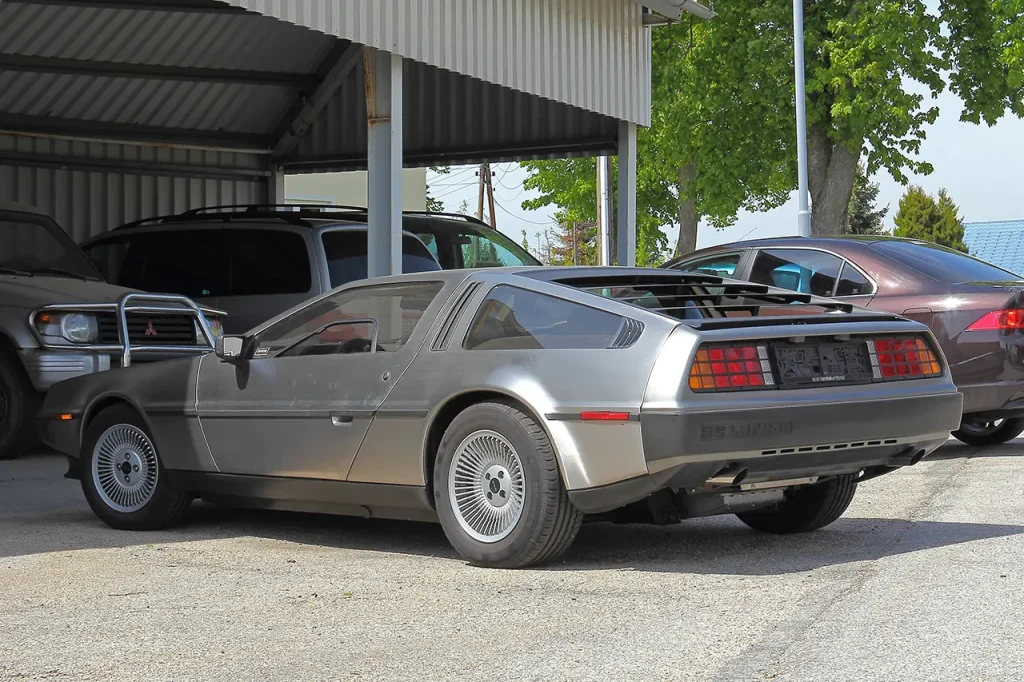
The DeLorean DMC-12, commonly referred to as just “The DeLorean”, ascended to stardom in Robert Zemeckis’s classic Back to the Future trilogy. Originally known for its gull wing doors and stainless steel body, it was its cinematic transformation into a time machine that etched the DeLorean into the annals of automotive history. The DeLorean, with its flux capacitor and time circuits, played an integral role in the movie, literally driving the plot and transporting the film’s characters through various times and places.
The car displays a 1981 California license plate “OUTATIME”. The plate, packed with character and charm, captures the essence of the franchise. In Back to the Future 2, when the DeLorean is modified to fly, it sports a futuristic barcode style number plate. This creative use of number plates adds a memorable touch, linking to the central theme of the films.
Because of the DeLorean’s association with the franchise, the car became a symbol of ‘80s pop culture and cinematic history. Even though the DeLorean Motor Company no longer exists (actually, they went out of business in 1982, three years before the film’s debut), the DMC-12’s iconic status has endured thanks mostly to its role in these films. The car’s unique features, including the memorable plates, gull wing doors, and, you know – the ability to travel through time – ensure it remains a symbol of cinematic and automotive history. DMC-12s are now quite valuable, selling for up to £35k in the UK and as much as $75k in the USA.
Customise your 4D number plates
Build unique number plates with our intuitive and fully interactive number plate builder.
Build Your 4D Number Plates
1968 Mustang GT 390 Fastback & The Bullitt Phenomenon
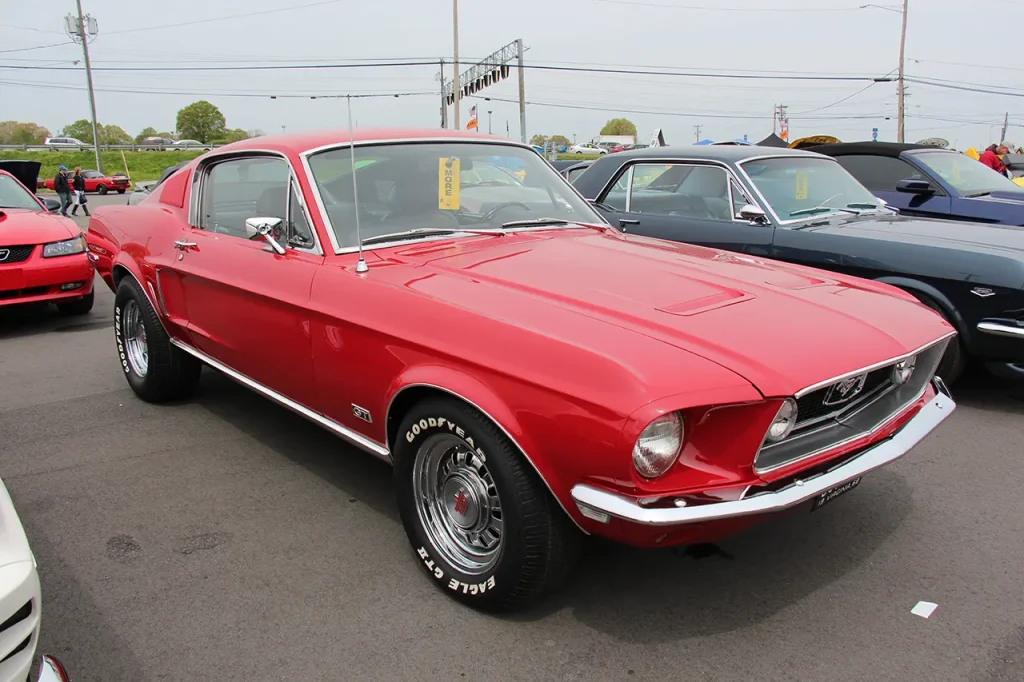
When it comes to car chases in movie history, there’s one scene that stands head and shoulders above the rest: Steve McQueen’s tyre-screeching pursuit through the hilly streets of San Francisco in the movie Bullitt (1968). McQueen drove the 1968 Mustang GT 390 Fastback, which achieved legendary status in the high-octane thriller. The car perfectly embodies McQueen’s cool and rebellious character Lt. Frank Bullitt. The roaring V8 engine, Highland Green paint job and minimalistic style made this car an icon in cinematic and car history.
The gritty detective’s Mustang didn’t need fancy gadgets or revolving number plates. No, instead it has simple black-on-yellow California plates (JJZ 109, in case you’re wondering). Less glamorous than Bond’s Aston, but still has a charm of its own. It represented a stripped back no-nonsense approach, just like Lt. Frank Bullitt. The car emphasises raw power and performance.
Even today, decades on, the Bullitt Mustang continues to inspire admiration among car and movie enthusiasts alike. Ford released special Bullitt edition mustangs over the years to celebrate various anniversaries of the film. The ’68 Mustang GT 390 Fastback’s prominence in Bullitt, and the lasting influence on popular culture, testifies to its star quality. The car is a truly unforgettable piece of cinematic motoring history.
Further Reading
You may also be interested in: Breaking Barriers – The Speed Records that Shook the World
Ferris Bueller’s Day Off Joyride In A 1963 Modena Spyder California
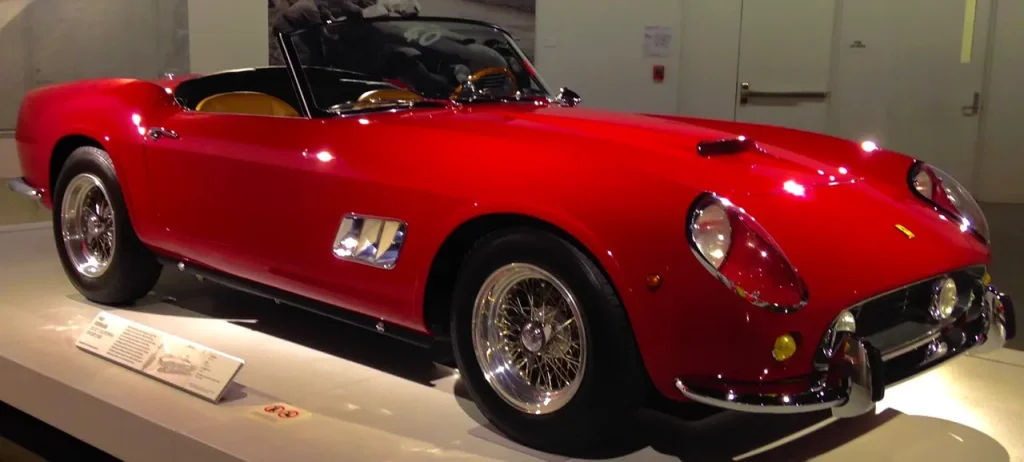
No joyride in cinematic history is as joyous or infamous as Ferris Bueller’s day off in the 1963 Modena Spyder California, which was a replica of a 1961 Ferrari 250 GT California Spyder. The car in the movie was actually built by Modena Design and Development in California. That didn’t matter though, the audience got to see Ferris, Cameron, and Sloane race through the streets of Chicago in this little red beauty. The open-topped design, leather interior, and throaty growl made the car a symbol of the free-spirited adventure the trio embarked on.
The Modena Spyder sported number plates appropriately reading “NRVOUS”. As Cameron’s father’s prized possession, the plate added an element of irony to the narrative. It provides an additional layer of personality to the vehicle and adds depth to the story and memorability of the film.
The 1963 Modena Spyder California’s iconic status extends beyond the film. In fact, so iconic is the car and its role in the movie, it sold at auction for $337,500 in 2022. With its memorable number plate and distinctive style, the Spyder encapsulates the rebellious and care-free spirit of Ferris Bueller’s Day Off, earning it a place in automotive history despite not being a real Ferrari.
Ghostbusting In The Ecto-1 – The 1959 Cadillac Miller-Meteor
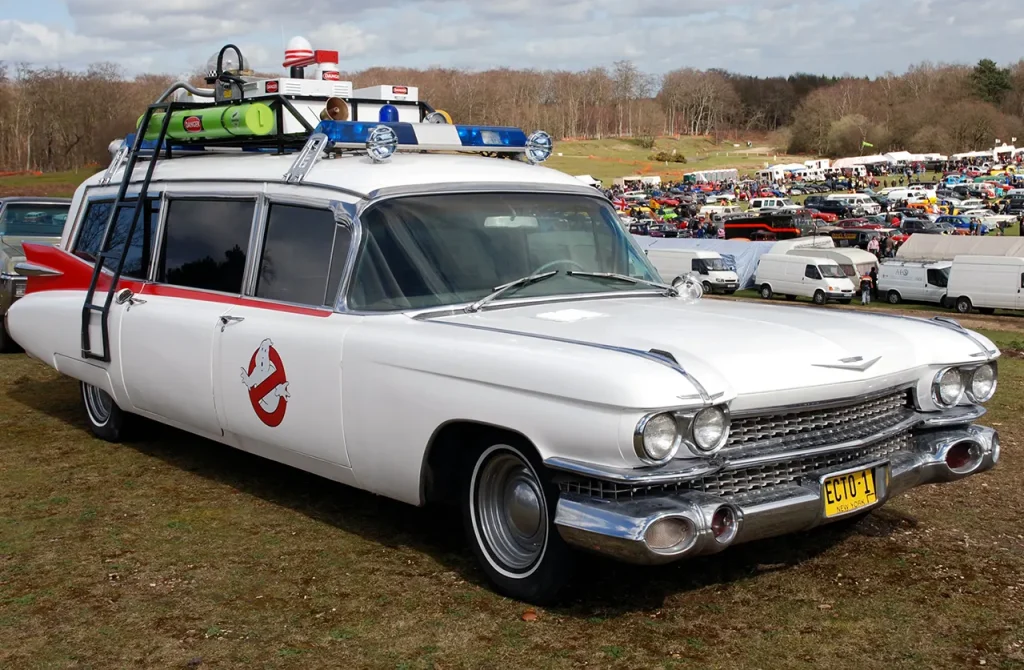
Now, when it comes to cinematic cars with character, few can compete with the Ecto-1 from Ghostbusters. The 1959 Cadillac Miller-Meteor, a former ambulance and hearse, became as much a star of the movie as the actors themselves. The car features a standout white and red paint job, a unique siren, and a roof stacked with ghost-catching equipment. It was a car perfectly fitting for a team of parapsychologists and ghost-catchers hunting spooks, spectres, ghosts, and psychomagnotheric slime!
It’s license plates, ECTO-1, became an iconic part of the vehicle’s identity. The plates mirrored the Ghostbuster’s branding, enhancing the comedic and outlandish elements of the franchise. The ECTO-1 plates, like the car itself, became a symbol of the team’s spirit, standing out in a sea of typical New York plates and reinforcing the humorous and unique world created in the film.
The Ecto-1 itself has since enjoyed an enduring popularity and was reprised in the sequels and TV shows. The Ecto-1 remains a beloved piece of pop culture and is a testament to the legacy of Ghostbusters. It’s unforgettable design, standout paint job, ghost-hunting gadgets, plus the iconic plates, make the Ecto-1 a true cinema star.
The Batmobile – An Evolution of Batman’s Ride Through The Years
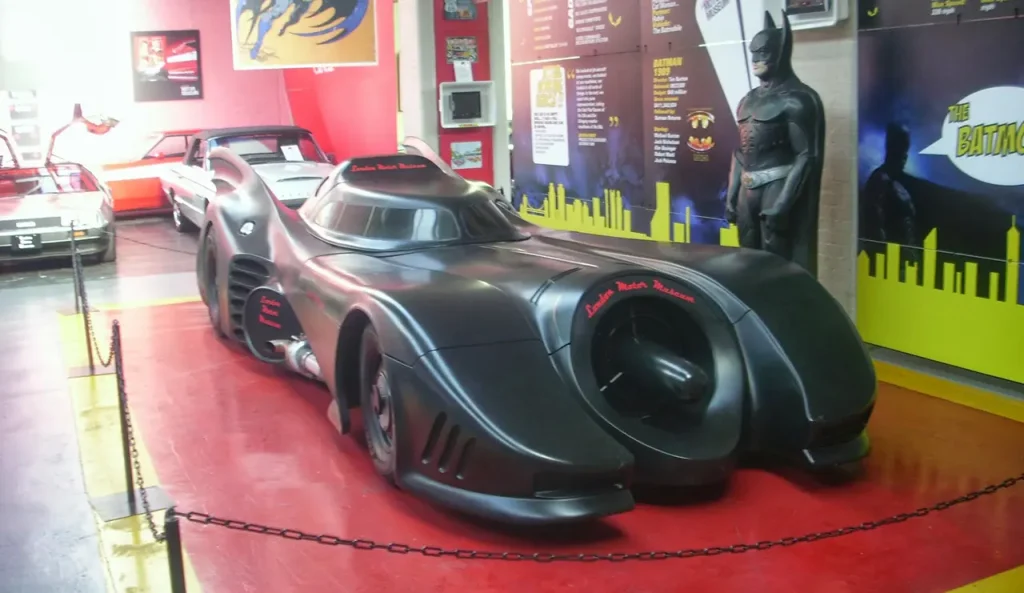
From the comic books to the big screen, no superhero car has quite the reputation or recognition as the Batmobile. The Batmobile has been transformed over the decades to fit the tone of each film. It was once a modified Lincoln Futura in the 1966-1968 TV series. In the ‘80s, Tim Burton’s Batmobile had become a jet-powered war machine. By the time of Christopher Nolan’s Dark Knight trilogy, the Batmobile had become a tank-like Tumbler. Each iteration reflects Batman’s tech-savvy persona, driving a strong visual spectacle and making a statement about the caped crusader himself.
Most versions of the Batmobile have no plates, but it does feature a distinct bat symbol which – as if it really needed one – acts as a unique identifier. The bat emblem adds to the car’s mystique and is a key part of the Batmobile’s identity and the Batman brand. The lack of plates itself adds to the enigmatic persona of Batman and reinforces his position outside the law he seeks to uphold.
While each variation of the Batmobile has different capabilities and designs, the car carries the legacy of Batman’s commitment to justice and technological prowess. The Batmobile is as much a part of the mythos of Batman as the Batcave or the Batsuit, and continues to captivate fans with innovative designs and high-tech weapons and features. The Batmobile has been recreated by many over the years, and its iconic status in automotive and cinematic history remains uncontested, making the Batmobile a true contender for movie star car.
Mad Max’s “Pursuit Special” In The 1973 Ford Falcon
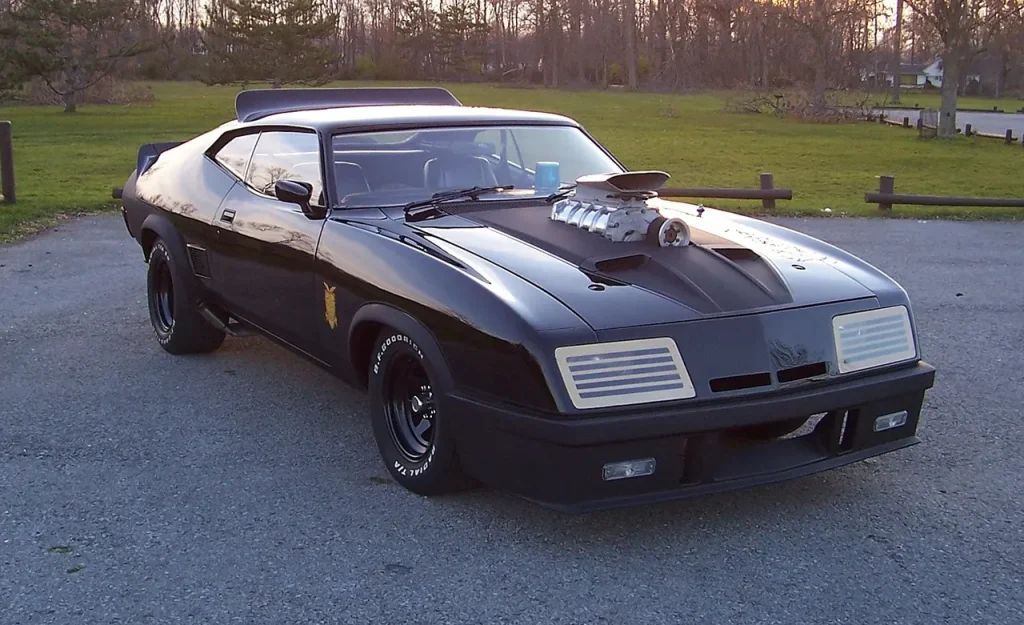
In the dystopian world of Mad Max, where resources are scarce and the landscape is harsh, emerged a symbol of power and defiance: the 1973 Ford Falcon. The Falcon, also known as the Pursuit Special is “the last of the V8 Interceptors” in the movie. The Pursuit Special is painted black, has a supercharged engine, and is uniquely styled making it an unforgettable sight in the stark backdrop of the film.
The Ford Falcon’s number plate reads MFP 508, which corresponds to Main Force Patrol, the police force for which Max works. The registration number not only identifies the vehicle within the law enforcement community, but it also symbolises Max’s ties to order and justice amid chaos. The plate adds a layer of depth to the Falcon’s character and integrates it more firmly into the narrative of the film.
The 1973 Ford Falcon has since become synonymous with Mad Max, and its popularity has endured through each film and the video games. Replicas of the Pursuit Special are a frequent sight at car shows and conventions even today – a testament to its significance. The distinct design, paired with the unique plates, bumps the Ford Falcon up from just another Ford to a full-blown cinematic icon.
1966 Alfa Romeo 1600 Spider Duetto – The Graduate’s Symbol of Rebellion
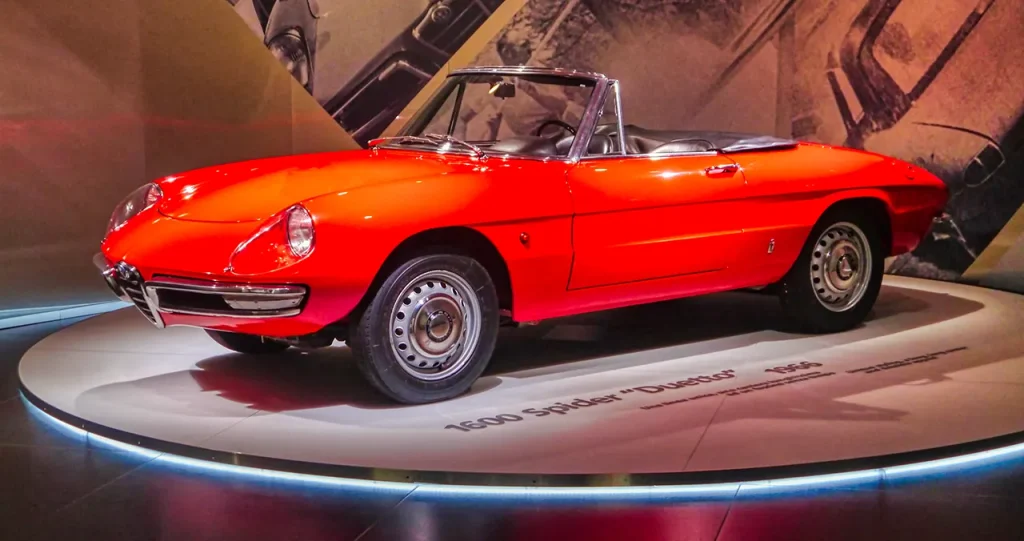
The 1966 Alfa Romeo 1600 Spider Duetto features in the 1967 classic film The Graduate. The bright red roadster, with a rounded tail and sleek body lines, is a symbol of youth and rebellion, mirroring Benjamin Braddock’s tumultuous journey to self-discovery. Benjamin, played by Dustin Hoffman, navigates through the complexities of post-graduation life, and the Duetto serves as a constant, almost reflecting his emotions through its revs and roars.
The car features a Californian plate reading DFL 629. The simple yet distinct plates ground the car in the setting, acting as a nod to the reality of Benjamin’s life amidst his personal upheaval.
The car’s role in The Graduate made it a cultural icon of the ‘60s. The Alfa Romeo’s presence on-screen helped to spike the Alfa’s popularity, making it a collectible among car enthusiasts. Decades on, the sight of a red Duetto can instantly recall the image of a young Dustin Hoffman sitting behind the wheel – proving the car’s enduring appeal in cinematic and automotive history.
Customise your gel number plates
Build unique number plates with our intuitive and fully interactive number plate builder.
Build Gel Number Plates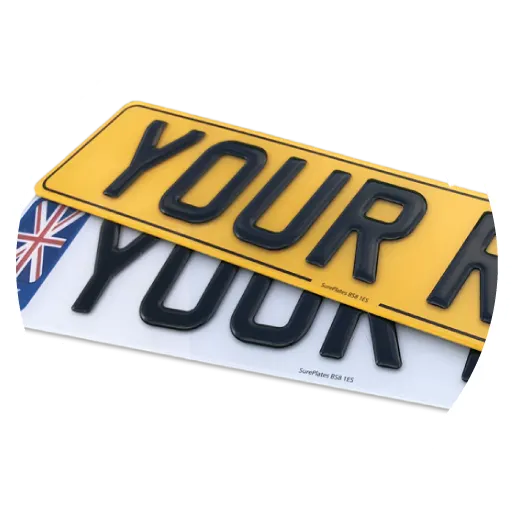
1977 Pontiac Trans Am – Smokey and the Bandit’s Getaway Vehicle
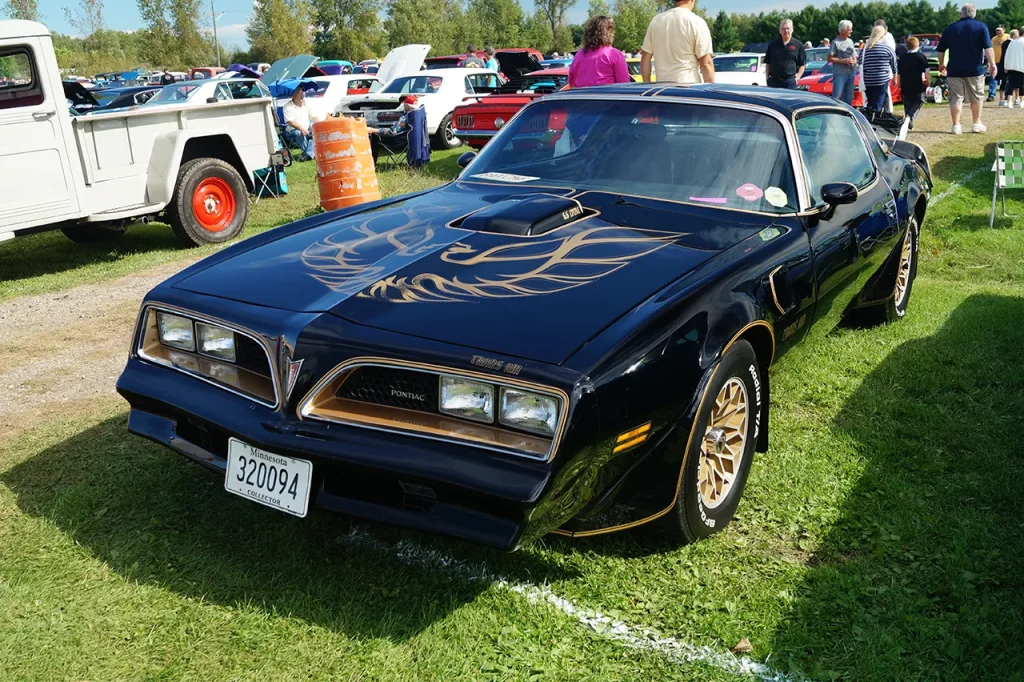
In the realm of movie star cars, few are as iconic as the 1977 Pontiac Trans Am from Smokey and the Bandit. The car, with its glossy black paint, aggressive T-top design, and gold detailing, embodies the American muscle car and the spirit of the ‘70s. Burt Reynolds, who played The Bandit, drove this magnificent car, showcasing its power and style in epic car chase scenes that became a staple of the film.
In the movie, the Trans Am sports a Georgia license plate reading BAN ONE, a fitting plate for the Bandit’s audacious character. The unique plate adds an extra layer of personality to the car and gives it an identity beyond just being the getaway car. Much like the car itself, the plate became a symbol of the film’s high-speed antics and carefree ethos.
Post-release, sales of the Trans Am skyrocketed, cementing the immense impact of the Trans Am on Smokey and the Bandit. This led to it becoming a defining symbol of the era. With the unforgettable plates and extraordinary on-screen presence, the Trans Am has continued to be a stand-out star in the realm of movie star cars and perfectly captures the essence of the film it so dramatically featured in.
1976 AMC Pacer – Wayne’s World’s ‘Mirth Mobile’
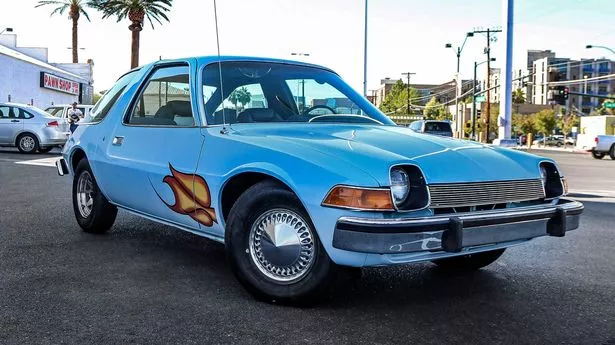
The 1992 classic Wayne’s World wouldn’t be the same without the 1976 AMC Pacer, affectionately known as the Mirth Mobile. The car is an undeniable symbol of the film’s charm and humour. As unconventional as its owners, the blue car, adorned with a wild flame paint job and fully equipped with a liquorice dispenser, became a beloved icon of ‘90s pop culture. The distinctive appearance and quirky features make it as memorable as any character in the movie, firmly integrating it into the fabric of Wayne’s World.
The Mirth Mobile comes with a distinct number plate – WAYNES – quite a befitting and personalised touch for the titular character’s primary mode of transportation. The plate became integral to the car’s identity, connecting it personally to Wayne and his eccentric world. It’s a humorous addition that matches the overall tone of the movie, while contributing to the now iconic status of the car.
The Pacer was considered a commercial failure upon its release, but the car’s legacy has been firmly cemented in automotive and movie history due to its iconic status as the Mirth Mobile. 30 years on from Wayne’s World, the Mirth Mobile’s unique paint job and quirky plates have made it an unforgettable symbol of ‘90s comedy. The Pacer’s transformation from the ugly duckling to cinematic icon showcases the power of film to reshape our perceptions and create a lasting impact.

